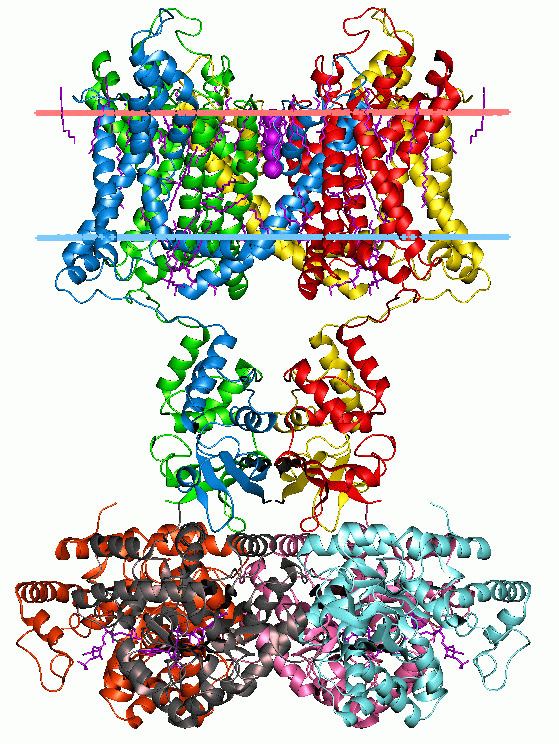Symbol Ion_trans InterPro IPR005821 SUPERFAMILY 1bl8 | Pfam PF00520 SCOP 1bl8 TCDB 1.A.1 | |
 | ||
Transmembrane cation channel superfamily was defined in InterPro and Pfam as the family of tetrameric ion channels. These include the sodium, potassium, calcium, ryanodine receptor, HCN, CNG, CatSper, and TRP channels. This large group of ion channels apparently includes families 1.A.1, 1.A.2, 1.A.3, and 1.A.4 of the TCDB transporter classification.
Contents
- Transient receptor potential channel
- Voltage dependent calcium channel
- Cation channels of sperm
- Ryanodine receptor
- Voltage gated potassium channels
- Calcium activated potassium channel
- Sodium
- Cyclic nucleotide gated
- Proton
- Related Proteins
- Tandem pore domain potassium channel
- Two pore channels
- Pore only Potassium Channels
- Ligand Gated Potassium Channel
- Voltage gated Potassium Channels
- Prokaryotic KCa Channels
- Voltage and Cyclic Nucleotide Gated Potassium Channel
- Sodium Channels
- Non Selective Channels
- Prokaryotic Inward rectifier potassium channels
- Engineered Channels
- References
They are described as minimally having two transmembrane helices flanking a loop which determines the ion selectivity of the channel pore. Many eukaryotic channels have four additional transmembrane helices (TM) (Pfam PF00520), related to or vestigial of voltage gating. The proteins with only two transmembrane helices (Pfam PF07885) are most commonly found in bacteria. This also includes the 2-TM Inward-rectifier potassium channels (Pfam PF01007) found primarily in eukaryotes. There are commonly additional regulatory domains which serve to regulate ion conduction and channel gating. The pores may also be homotetramers or hetrotetramers; where hetrotetramers may be encoded as distinct genes or as multiple pore domains within a single polypepetide. Interestingly, the HVCN1 and Putative tyrosine-protein phosphatase proteins do not contain an expected ion conduction pore domain, but rather have homology only to the voltage sensor domain of voltage gated ion channels.
